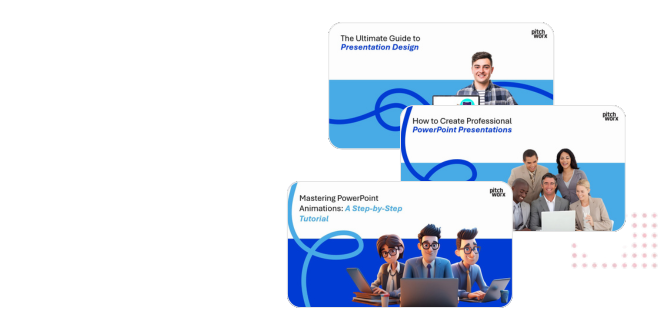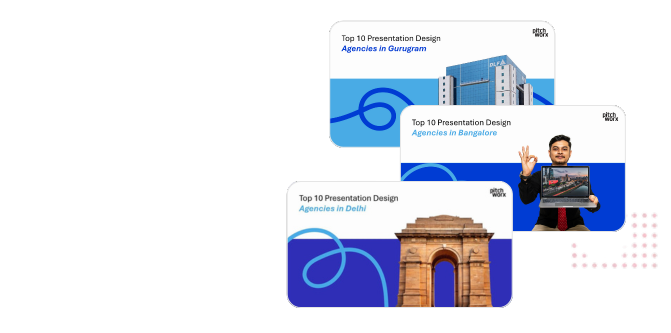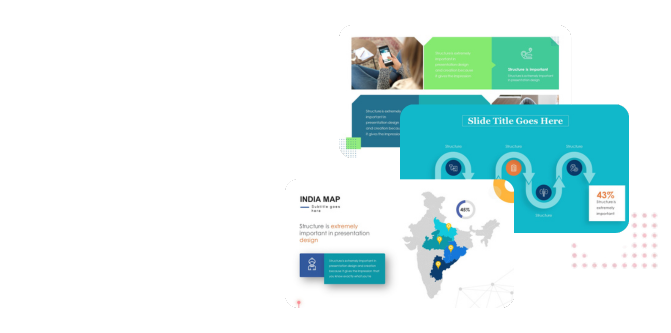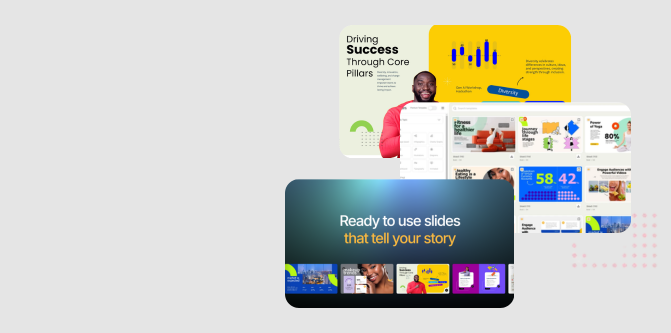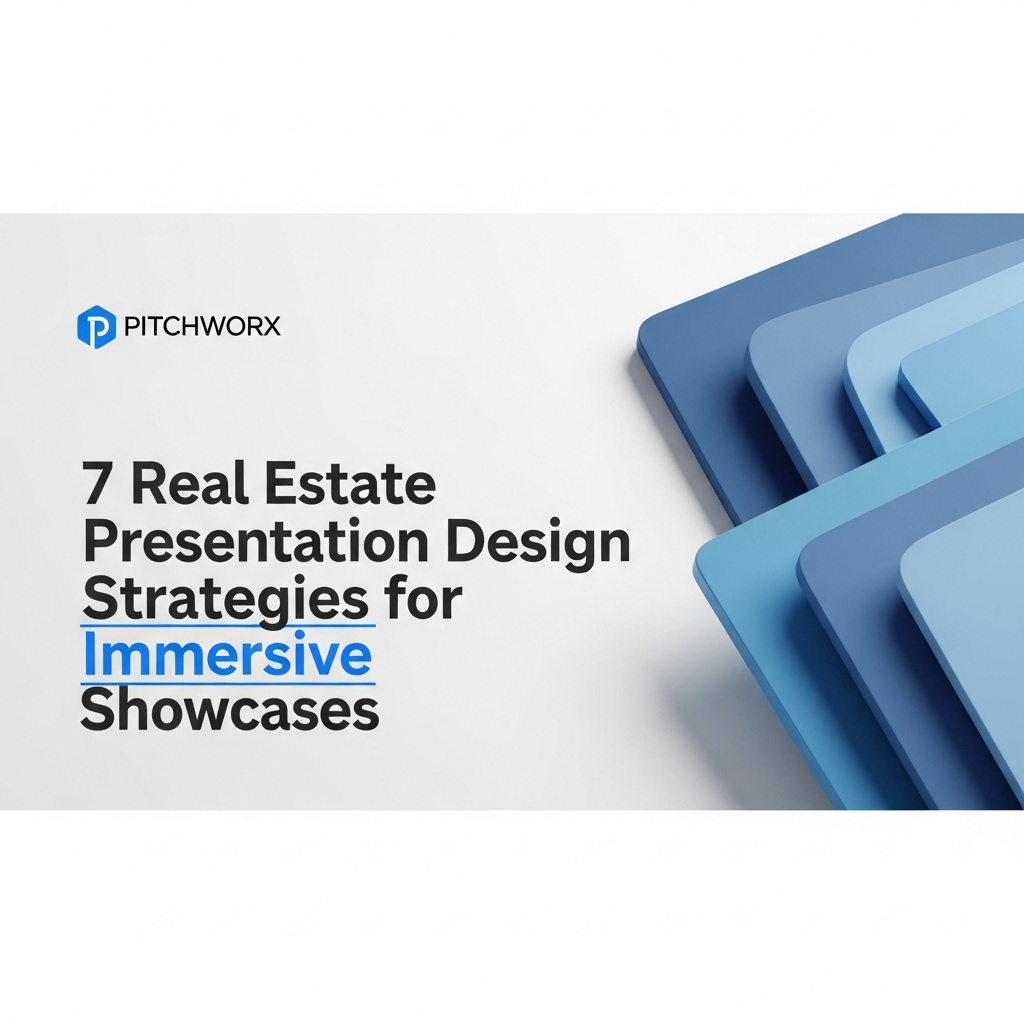The final viewing is scheduled. Your potential buyer has seen the photos, read the specs, but remains unconvinced. You present a standard deck—a collection of static images and dense text. The response is polite but noncommittal. The deal stalls. This scenario is all too common in an industry where emotion and vision are just as critical as location and price. Traditional methods are no longer enough to capture the imagination of modern buyers, making compelling Real Estate Presentation Design an essential tool for closing high-value deals.
The disconnect happens when a flat presentation fails to convey the experience of a property. Buyers don’t just purchase square footage; they invest in a lifestyle, a future, a feeling. Our work with leading developers has shown that presentations succeeding are those that transport the audience directly into the space. That’s why we champion a move from static information delivery to dynamic, immersive storytelling. By leveraging technology and narrative, a presentation can transform from a simple brochure into a virtual experience. Our presentation design services are built around this philosophy of creating engagement that converts.
Quick Answer
Real Estate Presentation Design is the strategic process of creating visually compelling and interactive narratives to showcase properties. It moves beyond static images to build an emotional connection with buyers. With listings featuring 3D Home tours getting 43% more views according to a Zillow report, effective design is crucial for engagement. Success relies on: 1. Integrating immersive technologies like virtual tours and 3D models. 2. Crafting a data-driven narrative that tells the property’s unique story. 3. Ensuring a seamless, mobile-first experience for on-the-go clients.
Table of Contents
- Why Traditional Property Showcases Are Becoming Obsolete
- The Root Causes of Uninspired Real Estate Presentations
- The Solution: 7 Strategies for Immersive Real Estate Presentation Design
- A Practical Guide to Implementing Your New Strategy
- Common Pitfalls That Dilute Your Presentation’s Impact
- Frequently Asked Questions
- From Blueprint to “Welcome Home”: Your Next Step
Why Traditional Property Showcases Are Becoming Obsolete
For decades, the real estate marketing toolkit has been predictable: glossy brochures, a gallery of professional photos, and maybe a simple floor plan. While these elements have their place, they represent a one-way conversation. They *tell* a potential buyer about a property but fail to *involve* them. In a market saturated with options, this passive approach is losing its effectiveness. Modern buyers, accustomed to interactive digital experiences in every other aspect of their lives, expect more.
The core issue is a lack of immersion. A flat PDF cannot convey the morning light in a kitchen or the sense of scale in a lobby. A photo gallery can’t replicate the flow from one room to another. This “experience gap” leaves too much to the imagination, creating uncertainty and friction in the decision-making process. As attention spans shorten, the inability to capture and hold a prospect’s interest within the first few moments of a presentation can mean the difference between a signed contract and a lost lead.
| Aspect | Traditional Showcase (The “Tell”) | Immersive Presentation (The “Involve”) |
|---|---|---|
| User Experience | Passive viewing of static content (PDFs, photos). | Active exploration via virtual tours, interactive maps. |
| Information Delivery | Data-dump of features and specifications. | Storytelling that weaves data into a compelling narrative. |
| Emotional Connection | Relies on buyer’s imagination to build a connection. | Fosters connection by allowing buyers to visualize themselves in the space. |
| Accessibility | Often requires in-person meetings or large file downloads. | Accessible 24/7 from any device, anywhere in the world. |
The Root Causes of Uninspired Real Estate Presentations
Why do so many real estate presentations fall flat? From our 13+ years of experience in design, we’ve noticed a pattern. The issue is rarely a lack of quality photography or information. Instead, it stems from a few deeper, more systemic problems in how these materials are conceived and created.
- Over-reliance on “Always-Done-It-This-Way” Templates: Many firms recycle the same PowerPoint templates that have been in use for years. These legacy formats weren’t designed for video, interactivity, or the dynamic content that modern buyers crave. They force creative assets into a rigid, uninspiring structure.
- Misunderstanding Buyer Psychology: A presentation that lists features (e.g., “1,200 sq. ft., south-facing windows”) is informational but not persuasive. An effective presentation translates those features into benefits that resonate emotionally (e.g., “Imagine your mornings filled with natural light in a spacious living area”). Many presentations fail to make this crucial leap from logic to emotion.
- Content Silos: Often, the photos are handled by one vendor, the drone footage by another, and the presentation assembly by an internal marketing assistant. This disconnected process leads to a disjointed final product where the narrative is lost. A cohesive story requires a unified strategic vision from the outset.
These root causes create a cycle of mediocrity. The presentations don’t perform well, but because the underlying process isn’t questioned, the solution is often just “more photos” or “better renderings” instead of a fundamental rethink of the presentation strategy itself.
A PitchWorx Insight
We’ve found that the most successful real estate presentations treat the property as the main character in a story. The presentation isn’t just a container for information; it’s the narrative arc. It should have an introduction (the neighborhood), rising action (the amenities and design), a climax (the unit itself), and a resolution (the call to action). This storytelling approach is what separates a forgettable deck from a deal-closing experience.
The Solution: 7 Strategies for Immersive Real Estate Presentation Design
To break free from static presentations, firms need to adopt a new framework centered on immersion and interactivity. This isn’t about adding technology for its own sake; it’s about using technology to tell a better story. Here are seven key strategies to transform your property showcases.
1. Integrate 360° Virtual Tours for True Exploration
Static photos are curated views. A 360° virtual tour hands control over to the buyer. It allows them to explore a space at their own pace, look up at the ceiling height, and get a genuine feel for the layout. Data from the Real Estate in a Digital Age report by the National Association of REALTORS® shows that virtual tours are a technology agents find highly valuable. Embedding these tours directly into your presentation makes it a destination, not just a document.
2. Craft a Narrative with Data-Driven Storytelling
Don’t just state facts; contextualize them. Instead of saying “The property is near three parks,” show a map illustrating the walking paths and distances. Instead of “strong market growth,” display a clean, simple chart showing appreciation trends. Weaving data visualizations into the narrative provides credibility and helps buyers justify their emotional decision with logical reasoning.
3. Bring Blueprints to Life with Interactive Floor Plans
A traditional floor plan is a flat, technical document. An interactive floor plan is a planning tool. Allow users to click on a room to see photos or videos from that space. Add a feature to drag-and-drop furniture to scale, helping them mentally move in. This transforms a confusing blueprint into an engaging and practical part of the presentation.
4. Use Cinematic Video and Drone Footage to Set the Scene
Video is unparalleled for conveying mood and lifestyle. A short, professionally produced video can showcase the property’s highlights in a way that feels more like a movie trailer than a sales pitch. Drone footage is essential for establishing context, showing the property’s relationship to the surrounding neighborhood, coastline, or cityscape.
5. Leverage Immersive 3D Architectural Visualization
For properties still under development, 3D visualization is non-negotiable. But it goes beyond simple renderings. Photorealistic animations can simulate a day in the life of the property, from sunrise to sunset. Our expertise in creating immersive 3D designs allows developers to sell a vision with stunning clarity and accuracy long before construction is complete.
6. Design for a Mobile-First Experience
Decisions aren’t made chained to a desk. Buyers, investors, and agents are constantly on the move. Your presentation must be flawlessly responsive, providing an intuitive and fast experience on a smartphone or tablet. This means prioritizing vertical layouts, tappable elements, and compressed media that loads quickly on cellular networks.
7. Personalize Content for Different Buyer Personas
A single, monolithic presentation may not resonate with every audience. A smart presentation can be adapted. For an investor, highlight ROI, cap rates, and market data. For a family, focus on schools, community, and safety. Building a modular presentation allows your sales team to customize the narrative for each specific client, making the content far more relevant and impactful.
A Practical Guide to Implementing Your New Strategy
Shifting from a static to a dynamic presentation model is a process. It requires a strategic approach that aligns your assets, technology, and narrative. Here’s a simplified step-by-step guide to get you started.
- Step 1: Strategic Asset Aggregation. Begin by auditing all your existing assets: photography, videography, drone footage, floor plans, renderings, market data, and testimonials. Identify gaps. Do you need a 360° tour? Is your video footage cinematic enough? Consolidate everything into a central, organized library.
- Step 2: Storyboarding the Buyer’s Journey. Before opening any software, map out the story you want to tell. What is the first thing a buyer should feel? What questions will they have? Structure your presentation to follow a logical and emotional path, moving from broad context (neighborhood) to specific details (finishes and fixtures).
- Step 3: Platform and Technology Selection. Decide where your presentation will live. Will it be an advanced PowerPoint or Google Slides deck? A web-based microsite? Or a custom application? The choice depends on your budget, timeline, and the level of interactivity required. The goal is to choose a platform that supports your story, not one that limits it.
- Step 4: Design and Development. This is where the visual identity comes to life. A professional design team will ensure the presentation reflects the property’s brand—be it luxury, modern, or family-friendly. This phase involves integrating all interactive elements, ensuring smooth navigation, and optimizing media for fast performance. Engaging an agency for your services that convert can be critical at this stage.
- Step 5: Distribution and Feedback Loop. How will you share the presentation? Through a simple link, a QR code on-site, or via email campaigns? Ensure your distribution method is seamless. Crucially, implement analytics to track engagement. Which sections are viewed most? Where do users drop off? Use this data to continually refine and improve your presentation.
Buyer Engagement
+43% Views
For listings with 3D tours (Zillow)
Agent Adoption
35% of Agents
Use virtual tours in their work (NAR)
Common Pitfalls That Dilute Your Presentation’s Impact
Even with the best intentions, a few common mistakes can derail an otherwise powerful real estate presentation. Being aware of these potential traps is the first step to avoiding them.
- Technology Overload: Adding too many complex features can lead to slow loading times and a confusing user experience. The technology should be intuitive and serve the story, not overshadow it. If a feature doesn’t make the property easier to understand or more appealing, it’s probably unnecessary.
- Forgetting the Human Element: A presentation filled with slick renderings and data can feel cold. Incorporate lifestyle imagery, testimonials from residents, or videos that showcase the community vibe. The goal is to sell a home, not just a house.
- A Vague Call-to-Action (CTA): What should the viewer do after the presentation? The next step should be crystal clear. Whether it’s “Schedule a Private Tour,” “Contact an Agent,” or “View Available Units,” a prominent and direct CTA is essential to convert interest into action.
- One-Size-Fits-All Approach: As mentioned earlier, different stakeholders have different priorities. An investor cares about numbers, while a potential resident cares about lifestyle. Sending the exact same presentation to both is a missed opportunity for targeted, persuasive communication.
Related Services
Frequently Asked Questions
1. How much does professional real estate presentation design cost?
Costs can vary widely based on scope and complexity. A simple redesign of an existing PowerPoint deck might be a few thousand dollars, while a fully interactive web-based presentation with custom 3D animations and video can be a significant investment. The key is to align the budget with the value of the property and the target audience.
2. What is the typical timeline for creating an immersive presentation?
A standard project timeline ranges from 2 to 6 weeks. This includes discovery and strategy, asset collection, storyboarding, design, development, and revisions. Projects requiring extensive new asset creation, like 3D modeling or video production, will naturally fall on the longer end of that spectrum. Clear communication and timely feedback are crucial for staying on schedule.
3. Can’t I just use a standard template from a site like Canva?
While template-based tools are great for simple marketing materials, they lack the customization and technical capabilities required for high-end, immersive property showcases. They often cannot embed interactive 360° tours, complex animations, or data visualizations smoothly. A bespoke presentation ensures your property’s unique brand and story are at the forefront, avoiding a generic look.
4. What information do I need to provide to a design agency?
To start, you’ll need to provide all existing assets (logos, photos, videos, floor plans), brand guidelines, details about your target audience, and the property’s key selling points. A good agency will guide you through a discovery process to extract the core narrative and identify any strategic or asset gaps that need to be filled.
5. How do you measure the ROI of a high-quality presentation?
ROI can be measured through both quantitative and qualitative metrics. Quantitatively, you can track engagement analytics (time spent, features used), lead conversion rates from the presentation, and sales cycle length. Qualitatively, a superior presentation elevates your brand perception, commands higher price points, and provides your sales team with a more confident and effective tool.
6. What’s the difference between a virtual tour and a 3D model?
A virtual tour is typically created by stitching together 360-degree photos of a real, existing space, allowing you to “look around” from fixed points. A 3D model is a computer-generated environment, often used for unbuilt properties, that allows for a more fluid “fly-through” experience and can be viewed from any angle, almost like a video game.
From Blueprint to “Welcome Home”: Your Next Step
The future of real estate marketing is experiential. Moving beyond flat, informational presentations to create immersive, narrative-driven showcases is no longer an innovation; it’s a necessity. By focusing on storytelling, leveraging interactive technology, and understanding buyer psychology, you can create a presentation that doesn’t just display a property—it sells a vision. It closes the gap between seeing a listing and feeling at home.
The most effective real estate presentation design transforms a passive audience into active participants. It invites them to explore, to imagine, and ultimately, to invest. It’s time to retire the outdated PDF brochure and embrace a tool that is as dynamic and compelling as the properties you represent.
Ready to elevate your property showcases? Our presentation design services help businesses across global markets build experiences that close deals. View our portfolio to see how we bring properties to life.




